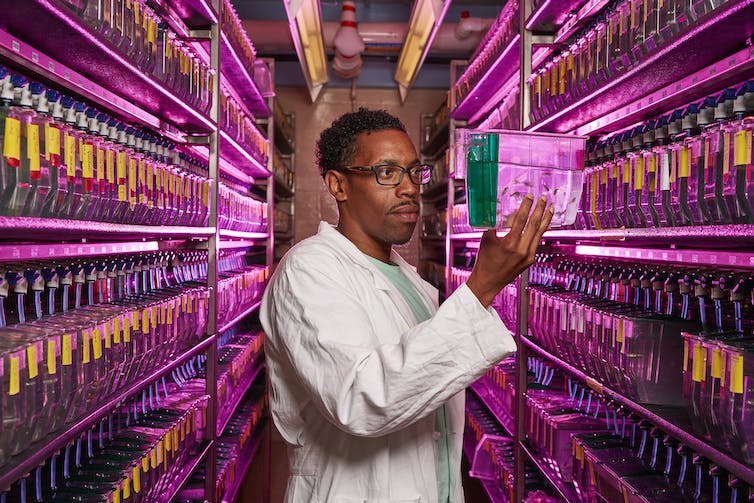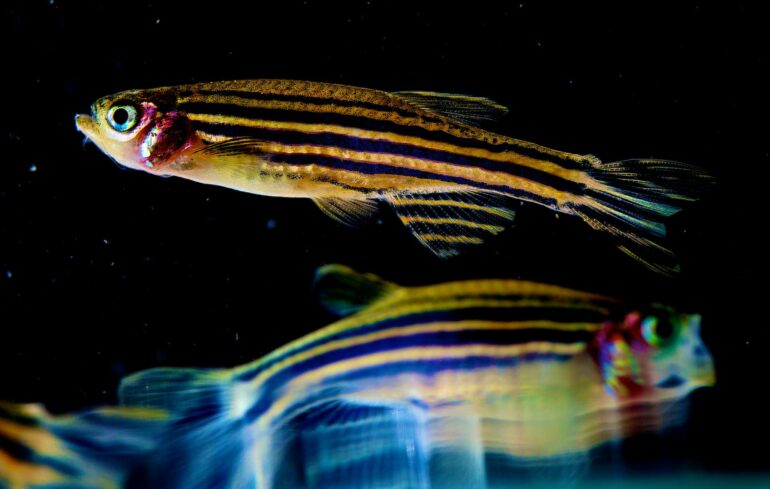Scientists have relied on animal models as an alternative to testing on human tissues and cells for decades. But not just any organism can adequately model how human cells behave. Researchers take into account how quickly the organism can mature, how many offspring it can produce and how often it can reproduce. When studying genetics and developmental biology, one of the most important qualities to consider is how similar the model organism’s genes are to human genes.
Although humans and fish certainly look very different, the zebrafish has proved to be an excellent model organism for scientists studying hematopoiesis, or the development of blood cells.
In the Espín Lab at Iowa State University, we study the early stages of blood development, particularly the birth of blood stem cells, which happens only once during embryonic development. We focus on a specific set of genes that play a significant but somewhat elusive role in the molecular pathways involved in this process. Although we want to understand how these genes work in the context of human blood development, testing on human embryos is obviously ethically impossible. To circumvent these challenges, we use zebrafish instead.

The National Institute of Child Health and Human Development houses the largest zebrafish facility in the U.S. Each tank contains live zebrafish used in research.
Ernesto del Aguila III/NHGRI via Flickr
Zebrafish as a model organism
Zebrafish have several traits that make them excellent model organisms.
For one, one female zebrafish can produce hundreds of embryos per week. This is important to scientists because having larger sample numbers strengthens the accuracy of the data they collect in their experiments.
Zebrafish embryos are also able to develop quickly. One day of development in zebrafish is equivalent to approximately 90 days of human development. This means that researchers can save time and observe the different stages of development much sooner than with other organisms.
This time-lapse video shows the first 22 hours of zebrafish development after fertilization, with blood vessels labeled green. Blood has already formed at this stage of development.
Another useful quality of zebrafish is that they are translucent during early development. As soon as their embryos are fertilized, scientists can observe cells and tissues form and clearly see the effects of modifying different genes.
Perhaps the most important feature of zebrafish for scientists is their genetic makeup. Approximately 70% of zebrafish genes have similar analogs in people, allowing researchers to study how certain genes work.
Studying blood disorders with zebrafish
Beyond sharing a significant percentage of genes with people, zebrafish are especially useful to blood development research because they produce the same types of blood cells. Just like people,…



